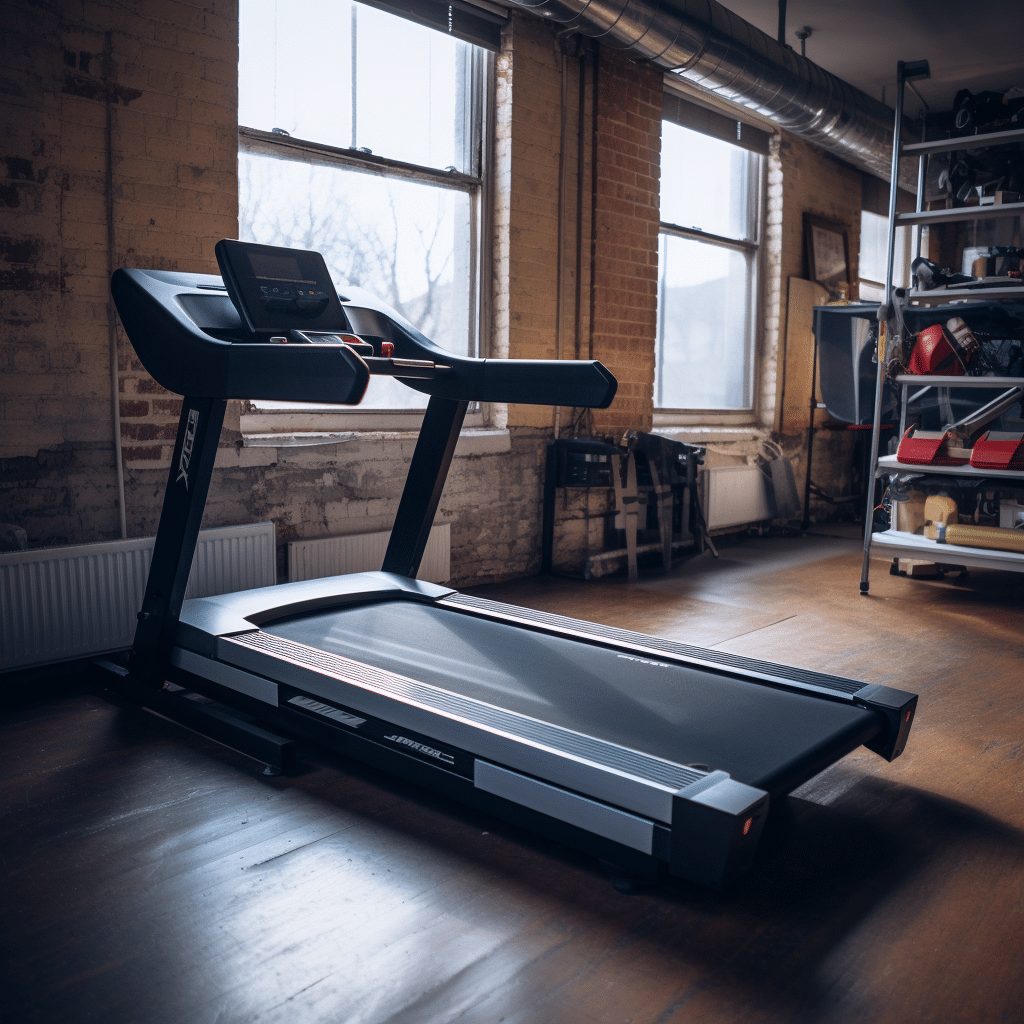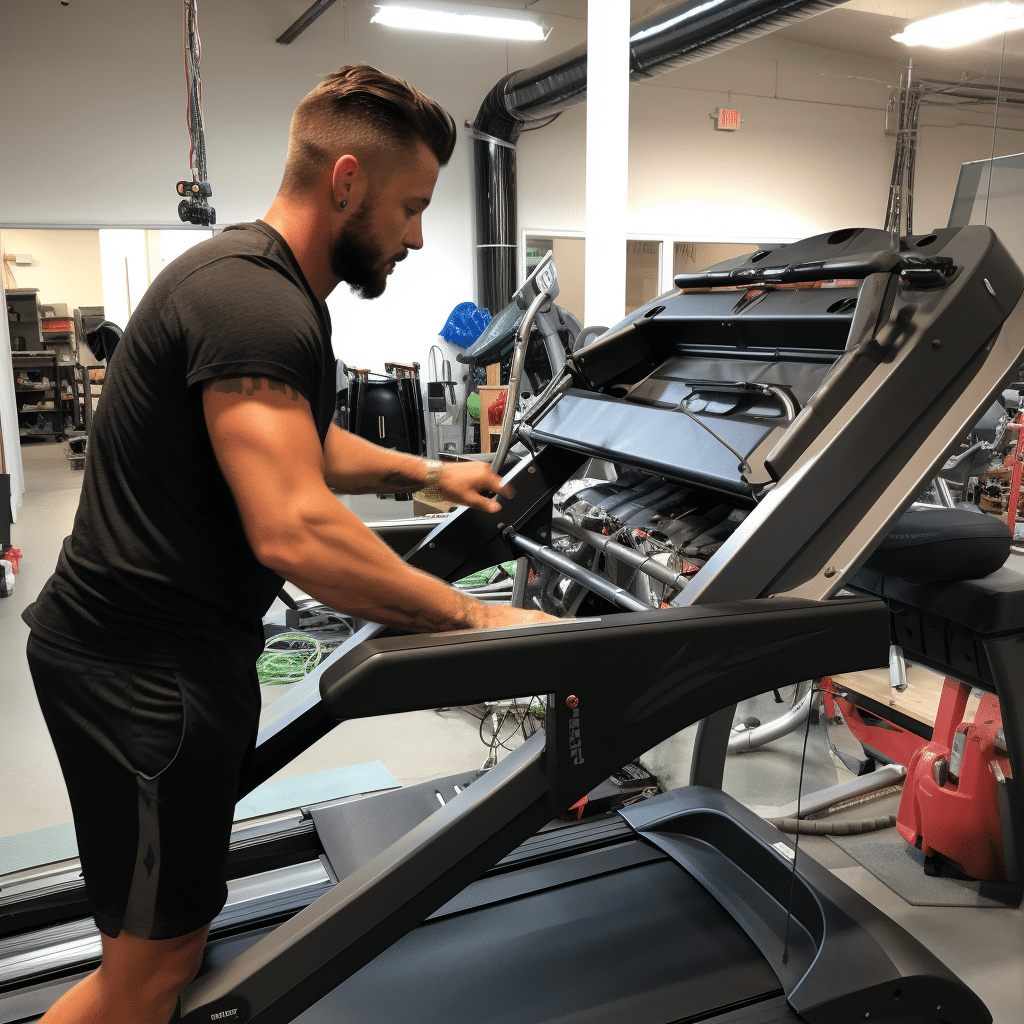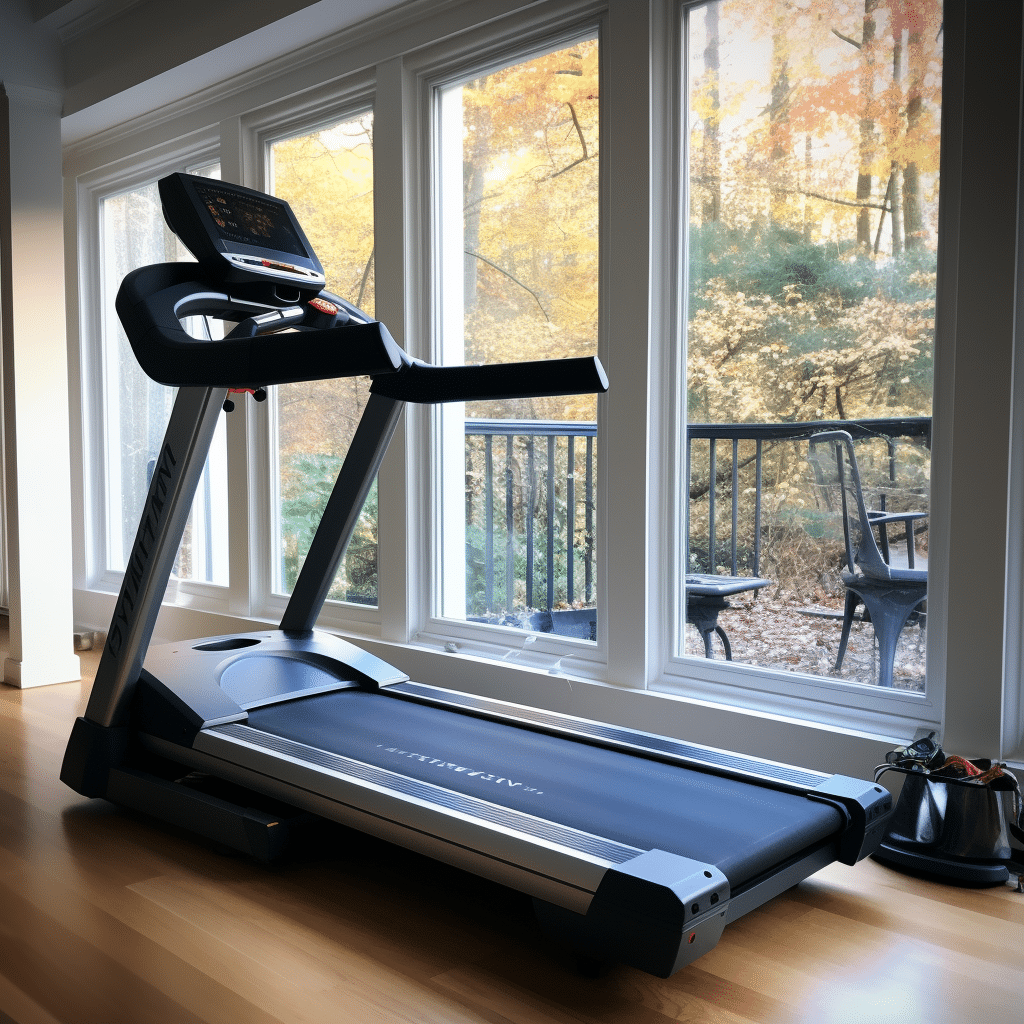Introduction
How To Disassemble A Treadmill: Popular treadmills are a convenient and effective way to stay fit and healthy at home or the gym. However, these mechanical marvels may need maintenance, repairs, or relocation, which may require disassembly. Knowing how to disassemble a treadmill is useful for fitness enthusiasts, technicians, and people moving treadmills. You’ll learn how to safely and efficiently disassemble a treadmill with this guide. Though treadmills vary, the disassembly process is usually the same.
The key to a successful disassembly lies in proper preparation, careful execution, and attention to detail. Before you begin disassembling your treadmill, it’s to familiarize yourself with its specific make and model. This involves consulting the manufacturer’s instructions and user manual, which typically include for assembly, disassembly maintenance. Understanding the unique features of your treadmill and the tools required for the disassembly process will help ensure a smooth operation. Disassembling a treadmill can be a somewhat daunting task for beginners, but with the right precautions, it can be a manageable and even rewarding endeavor.
Gain confidence in your abilities to maintain and repair your training machine. Knowing how to disassemble a treadmill helps moving it safer and more efficient. In disassembling a treadmill, safety advice are given at every step to avoid injury. If you’re a fitness enthusiast or a professional mechanic, you’ll discover the information you need to disassemble and maintain your treadmill. By deconstructing a treadmill, you can learn its secrets.
Do you have to disassemble treadmill for moving?
Do you have to disassemble a treadmill for moving? It’s not required. Some treadmills aren’t designed for dismantling, so you’ll need to move in one piece. Others can be quickly disassembled and reassembled, so taking them apart is a great way to save on space and make the move easier.
Treadmill Size and Weight: Treadmills come in various sizes, ranging from compact foldable models to large, commercial-grade machines. The size and weight of your treadmill play a significant role in determining whether disassembly is necessary. Smaller, more portable models might be manageable to move without disassembly, while larger models often require some level of breakdown.
Moving Distance: The distance you’re moving the treadmill can impact your decision. If you’re moving it within the same room or to an adjacent room, disassembly might not be required. However, if you’re moving it to a different floor or a distant location, you may need to consider breaking it down.
Available Space: Consider the available space in your new location. Doorways, hallways, and stairwells can be significant obstacles to moving a fully assembled treadmill. If the space is limited, disassembly becomes a more practical option.
How heavy is a treadmill?
While manual treadmills can weigh as little as 40 pounds, premium commercial-use ones can reach weights up to 450-500 pounds. Although, the average weight of a treadmill is usually around 200-250 pounds. When deciding which treadmill to invest in, you must decide what purpose you want to use it.
Type of Treadmill: The type of treadmill is a primary factor in determining its weight. There are generally three main categories: manual treadmills, motorized treadmills, and commercial-grade treadmills. Manual treadmills are typically the lightest, while commercial-grade treadmills are the heaviest.
Size and Dimensions: The physical size and dimensions of a treadmill play a significant role in its overall weight. Larger treadmills with longer decks and wider running surfaces are naturally heavier than compact models.
Materials and Build: The materials used in the construction of the treadmill affect its weight. High-end treadmills often feature sturdier and heavier components, such as a more substantial frame, larger motor, and thicker deck.
What to do with a dead treadmill?
Good Enough to Sell or Donate
“If the treadmill has any issues with the motor, belt, or electronics, it’s probably best to dispose of it.” Check with organizations such as Goodwill, The Salvation Army, or local schools or community centers to find out whether they’ll take exercise equipment donations, he suggests.
Check for Local Recycling Centers: Research local recycling centers or scrapyards that accept large exercise equipment. They often have the machinery to dismantle and recycle treadmills properly. Some centers may even pay you a small sum for the metal parts.
Contact the Manufacturer: Some treadmill manufacturers have take-back programs or recycling initiatives. Contact the manufacturer or check their website to see if they offer any recycling options for old machines.
Local Schools and Community Centers: Contact local schools, community centers, or rehabilitation facilities to see if they’re in need of exercise equipment. Donating your treadmill can benefit your community and access to fitness for those who might not afford it otherwise.

How do movers move treadmills?
If you have a non-folding treadmill that also has no wheels, it will be best to be moved using a dolly. Your movers will have at least two people and up to four people to load it onto the flat dolly and pushing the heavy machine to the truck.
Evaluate the Space: Before moving the treadmill, assess the space it needs to navigate. Measure doorways, hallways, and stairwells to ensure the treadmill can pass through without difficulties.
Safety Check: Perform a safety check to ensure the treadmill is in good working condition. Secure any loose parts, and if there are any issues, consider repairing them before the move.
Disassembly: In partial or complete disassembly may be necessary. Consult your treadmill’s user manual for specific instructions on how to disassemble it. This step is essential, especially if the treadmill is too large to fit through doorways.
Moving Straps: Specialized moving straps can be used to secure the treadmill and distribute the weight evenly. A dolly or hand truck makes it easier to transport the treadmill, especially if you have to navigate stairs.
Do treadmills fold down?
If you’re concerned that a treadmill won’t fit in your home gym, a folding treadmill might be your answer. Folding treadmills do precisely what their name implies — they fold up, and usually have transport wheels, making them an ideal candidate for easy storage when not in use.
Space-Saving: The most significant advantage of foldable treadmills is their space-saving design. When the treadmill is not in use, you can fold it up, creating more floor space for other activities or simply making the room look less cluttered.
Foldable treadmills have wheels for easy movement and storage. They can be put away in a closet, under a bed, or against a wall. This is helpful for people with small workout areas.
Portability: The folding feature makes these treadmills more portable. You can relocate them from room to room or even take them with you if you move to a new location.
Variety of Features: Foldable treadmills come in various models, some with advanced features like adjustable incline, pre-set workout programs, heart rate monitoring, and more. You can find a foldable treadmill that suits your fitness needs and preferences.
How do you move a sole 80 treadmill?
Lift the treadmill running deck until it is secured by the locking telescoping tube assembly in center back of base. The treadmill is equipped with four transport wheels that are engaged when the treadmill is folded. After folding simply roll the treadmill away.
Before moving your Sole F80, assess the space it needs to navigate. Measure doorways, hallways, and stairwells to ensure the treadmill can pass through without difficulties. Ensure that the treadmill is in good working condition. Secure any loose parts, and if there are any issues, consider repairing them before the move.
In partial or complete disassembly is necessary. Consult your Sole F80 treadmill’s user manual for specific instructions on how to disassemble it. This step is especially if the treadmill is too large to fit through doorways. Specialized moving straps can be used to secure the Sole F80 and distribute its weight evenly.
A dolly or hand truck can make it significantly easier to transport the treadmills, especially if you have to navigate stairs. Use furniture blankets to protect the Sole F80 and surrounding surfaces from scratches and damage during the move. If using a dolly, make sure to secure the treadmills to it with moving straps to prevent it from shifting during transportation.
Is treadmill good for fat?
The bottom line about using a treadmills is that it will burn calories and help you lose weight when used regularly and correctly. There are other benefits to add to that. These include, Improving endurance.
Calorie Burn: Treadmills are excellent tools for burning calories. Running or walking on a treadmills can elevate your heart rate, increasing your energy expenditure. The more intense the workout and the longer the duration, the more calories you’ll burn. This calorie deficit is essential for fat loss, as it encourages your body to tap into its fat stores for energy.
Aerobic Exercise: Treadmills primarily offer aerobic or cardio exercise, which helps improve cardiovascular health and boost your metabolism. When you engage in aerobic activities like treadmills workouts, your body uses a combination of fat and carbohydrates for fuel. This can lead to fat loss over time as you consistently burn calories and create a calorie deficit.
Interval Training: Treadmills are versatile, allowing you to incorporate interval training into your routine. High-intensity interval training (HIIT) on a treadmills involves short bursts of intense exercise followed by brief periods of rest. HIIT is known for its effectiveness in burning calories and increasing fat loss.
Can two people move a treadmill?
Tip an unfolded treadmill onto its wheels with the help of a friend. If you couldn’t fold it, have one person stand at the front of the treadmill and one at the back. You should each be both be able to lift about 45 pounds (20 kg).
Moving a treadmill up or down stairs requires careful coordination. One person should support the treadmill’s weight from below while the other it from above. Take it one step at a time and move slowly. Treadmills are often wider than standard doorways, so you may need to angle the treadmills or remove the door if it’s a hindrance. Use furniture blankets to protect door frames and walls.
If you’re using a rental truck or another mode of transportation, secure the treadmills with straps or other restraints to prevent it from shifting during transit. When you arrive at your destination, carefully unload the treadmills using the same lifting techniques. Place it in its desired location, keeping in mind factors like leveling the machine, securing it against tipping, and ensuring there’s enough space for safe use.
If you disassembled any parts of the treadmills for transportation, follow the manufacturer’s instructions to reassemble it correctly. Test the treadmills to ensure it functions properly and hasn’t been damaged during the move. Always prioritize safety during the move, and if at any point you feel unsure or the task becomes too strenuous, don’t hesitate to seek professional assistance.

Conclusion
Disassembling a treadmill, as outlined in this is a valuable skill that can save you time, money, and stress in various situations. Whether you’re facing a treadmill maintenance task, moving to a new location, or seeking to gain a deeper understanding of this exercise machine, the and confidence you’ve acquired through this disassembly process are invaluable. One of the key takeaways from this is the emphasis on safety. Taking the time to prepare, gathering the necessary tools, and following safety precautions are essential steps in any treadmill disassembly project.
This not only ensures your physical well-being but also prolongs the life of your equipment and minimizes the potential for costly repairs. Understanding the inner workings of your treadmill, from the motor and belt to the frame and console, can you with a greater appreciation for the technology that drives your workouts. With this you can diagnose and fix common issues, such as belt replacement or motor repair, without the need for costly professional services. Moreover, learning how to disassemble a treadmills allows you to maintain control over your fitness equipment.
Solely reliant on external help or professionals, giving you a sense of empowerment and self-sufficiency. This can be particularly valuable in emergency situations or when the need for maintenance arises outside of regular business hours. For those planning to relocate a treadmill, disassembly is a crucial step. By breaking down the machine into manageable components, you not only make it easier to transport but also reduce risk of damage during transit. This can save you the expense of purchasing a new treadmill due to avoidable accidents. Disassembling a treadmill is a skill that every treadmill owner or fitness enthusiast should have in their toolkit.

